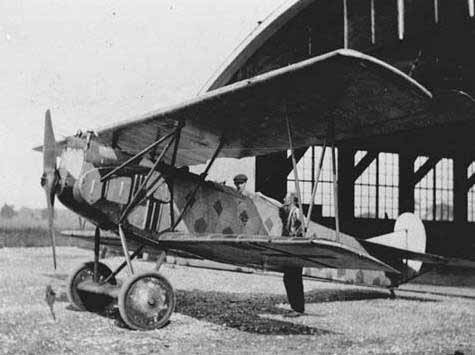Jagdstaffel 56 on:
[Wikipedia]
[Google]
[Amazon]
Royal Prussian Jagdstaffel 56, commonly abbreviated to Jasta 56, was a "hunting group" (i.e., fighter squadron) of the ''
 Jasta 56 began at
Jasta 56 began at
 Flying Albatros D.Va fighters from January 1918, the Jasta was re-fitted with
Flying Albatros D.Va fighters from January 1918, the Jasta was re-fitted with
Luftstreitkräfte
The ''Deutsche Luftstreitkräfte'' (, German Air Combat Forces)known before October 1916 as (The Imperial German Air Service, lit. "The flying troops of the German Kaiser’s Reich")was the air arm of the Imperial German Army. In English-langu ...
'', the air arm of the Imperial German Army
The Imperial German Army (1871–1919), officially referred to as the German Army (), was the unified ground and air force of the German Empire. It was established in 1871 with the political unification of Germany under the leadership of Kingdom o ...
during World War I
World War I or the First World War (28 July 1914 – 11 November 1918), also known as the Great War, was a World war, global conflict between two coalitions: the Allies of World War I, Allies (or Entente) and the Central Powers. Fighting to ...
. The squadron would score 63 aerial victories during the war. The unit's victories came at the expense of seven killed in action
Killed in action (KIA) is a casualty classification generally used by militaries to describe the deaths of their personnel at the hands of enemy or hostile forces at the moment of action. The United States Department of Defense, for example, ...
, four wounded in action
Wounded in action (WIA) describes combatants who have been wounded while fighting in a combat zone during wartime, but have not been killed. Typically, it implies that they are temporarily or permanently incapable of bearing arms or continuing ...
, two injured in accidents, and one taken prisoner of war.
History
 Jasta 56 began at
Jasta 56 began at Paderborn
Paderborn (; Westphalian language, Westphalian: ''Patterbuorn'', also ''Paterboärn'') is a city in eastern North Rhine-Westphalia, Germany, capital of the Paderborn (district), Paderborn district. The name of the city derives from the river Pade ...
's Geschwader
This is a list of words, terms, concepts, and slogans that have been or are used by the German military. Ranks and translations of nicknames for vehicles are included. Also included are some general terms from the German language found frequently ...
School on 20 October 1917, but was not officially established until 1 January 1918. Its first personnel reported in on 9 January 1918. It was assigned to '' 2 Armee'' on the 14th; it first saw combat on 9 February 1918. The new squadron scored first blood on the 19th. On 11 April 1918, it was consolidated into '' Jagdgruppe 6'' and moved to support '' 4 Armee'', remaining in that posting until war's end.
Commanding officers (''
Staffelführer
''Staffelführer'' (, " Formation leader") was one of the first paramilitary ranks used by the German ''Schutzstaffel'' (SS) in the early years of that group's existence. The later SS rank of ''Staffelführer'' traces its origins to the First ...
'')
* Franz Schleiff: 9 January 1918 – 27 March 1918
* Dieter Collin: 4 April 1918 – 13 August 1918
* Ludwig Beckmann
__NOTOC__
Ludwig "Lutz" Beckmann (26 October 1895 – 20 January 1965) was a German Luftstreitkräfte ace during World War I and a recipient of the Knight's Cross of the Iron Cross during World War II. The Knight's Cross of the Iron Cross was awa ...
: 13 August 1918 – war's end
Duty stations
*Neuvilly
Neuvilly is a commune in the Nord department in northern France.
Heraldry
French sartorial heritage
The city was a pivotal center of mulquinerie.
People
Frank Lester is buried there.
See also
*Communes of the Nord department
The fo ...
, France: 14 January 1918
* Mons-en-Chausee: 26 March 1918
* Ingelmunster
Ingelmunster (; ) is a municipality located in the Belgian province of West Flanders. The municipality comprises only the town of Ingelmunster proper and the village of Kriek. As of January 1, 2006, Ingelmunster had a total population of 10,617. ...
, Belgium: 11 April 1918
* Rumbeke
Rumbeke is a town in the Belgium, Belgian municipality of Roeselare in the province of West Flanders. It is most known as the location of Rumbeke Castle. Rumbeke was an independent municipality before the fusion of the Belgian municipalities in 1 ...
East, Belgium: 5 May 1918
* Croulshouten: 30 September 1918
Notable personnel
* Franz Schlieff * Dieter Collin * Ludwig Beckmann *Franz Piechulek
''Leutnant'' Franz Piechulek was a German World War I flying ace credited with 14 aerial victories.
World War I military service
He was assigned to ''Kampfeinsitzerstaffel 5'' on 27 October 1917. He scored his first aerial victory there, downing ...
Aircraft
 Flying Albatros D.Va fighters from January 1918, the Jasta was re-fitted with
Flying Albatros D.Va fighters from January 1918, the Jasta was re-fitted with Fokker D.VII
The Fokker D.VII is a German World War I fighter aircraft designed by Reinhold Platz of the '' Fokker-Flugzeugwerke''. Germany produced around 3,300 D.VII aircraft in the second half of 1918. In service with the ''Luftstreitkräfte'', the D.VII ...
s during May 1918. The unit's marking for aircraft featured yellow nose and vertical stabilizer
A vertical stabilizer or tail fin is the static part of the vertical tail of an aircraft. The term is commonly applied to the assembly of both this fixed surface and one or more movable rudders hinged to it. Their role is to provide control, sta ...
, white rudder, with a blue fuselage
The fuselage (; from the French language, French ''fuselé'' "spindle-shaped") is an aircraft's main body section. It holds Aircrew, crew, passengers, or cargo. In single-engine aircraft, it will usually contain an Aircraft engine, engine as wel ...
.
References
;Bibliography * 56 Military units and formations established in 1918 1918 establishments in Germany Military units and formations disestablished in 1918 {{wwi-air